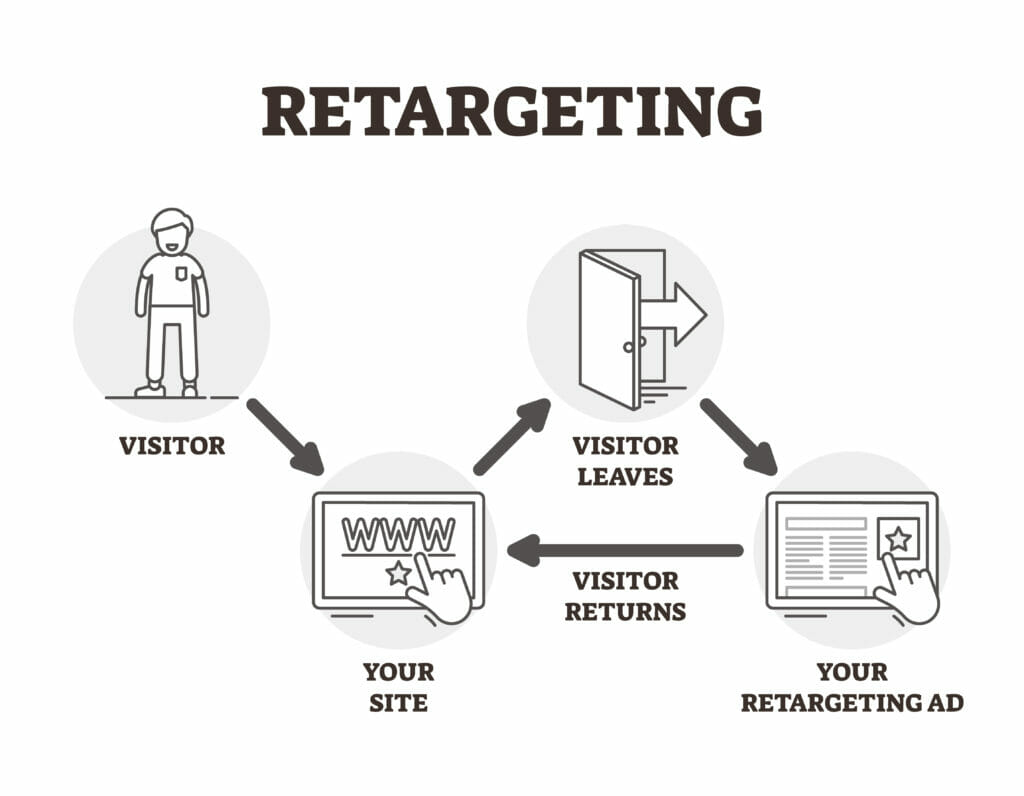Retargeting, also known as remarketing, is a form of online advertising that allows businesses to reach people who have previously visited their website. This is done by placing a cookie on the visitor’s browser, which then serves targeted ads to users as they browse the internet.
Retargeting is a powerful tool for businesses because it allows them to stay top-of-mind with their audience and bring them back to their website to complete a desired action, such as making a purchase. It can be used with other forms of online advertising, such as search and social media ads, to create a well-rounded marketing strategy.
Benefits of Retargeting PPC Ads
There are several benefits to using retargeting in your PPC advertising strategy:
- Increased brand awareness: Retargeting ads remind your audience about your brand and can help increase brand awareness.
- Increased conversion rates: Because retargeting ads are shown to people who have already shown interest in your business by visiting your website, they are more likely to convert compared to someone who has yet to interact with your brand.
- Cost-effective: Retargeting ads can be more cost-effective than other forms of online advertising because you are only targeting people who have already expressed interest in your business.
- Customization: Retargeting allows you to customize your ads to the specific actions taken by the user on your website. For example, if a user adds an item to their shopping cart but doesn’t complete the purchase, you can serve them an ad with a special offer to encourage them to complete the purchase.
How to Set Up Retargeting PPC Ads
To set up retargeting campaigns, follow these steps:
- Choose a retargeting platform: There are several retargeting platforms available, such as Google AdWords, Facebook Ads, and AdRoll. Consider which platform aligns best with your business goals and target audience.
- Install the retargeting pixel: To begin retargeting, you will need to install a small piece of code, known as a pixel, on your website. This will allow the retargeting platform to track and collect data on the actions of your website visitors.
- Create a retargeting list: Next, you will need to create a list of website visitors you want to target with your retargeting ads. You can make this list based on specific actions taken on your website, such as visiting a particular page or adding an item to their cart.
- Design your retargeting ads: Once you have your retargeting list, you can begin designing your ads. Make sure to create compelling ad copy and use visually appealing images to grab your audience’s attention.
- Set your budget and bid strategy: Determine how much you want to spend on your retargeting campaign. Consider using a bid strategy, such as cost-per-click (CPC) or cost-per-impression (CPM), to ensure you get the best investment return.
Tips for Success with Retargeting PPC Ads
- Test different ad creatives: It’s essential to test different ad creatives to see which performs the best. This can include testing different images, headlines, and call-to-action buttons.
- Use dynamic retargeting: Dynamic retargeting allows you to show ads to users featuring the specific products they viewed on your website. This can be especially effective for e-commerce businesses.
- Segment your audience: Consider segmenting your audience based on their actions on your website and tailor your retargeting ads accordingly. For example, you can create separate retargeting lists for users who abandoned their shopping cart and users who made a purchase and serve them different ads based on their actions.
- Don’t overdo it: It’s essential to strike a balance with your retargeting frequency. You want to serve retargeting ads sparingly, as it can become annoying to the user and potentially lead to a negative perception of your brand. On the other hand, if you serve the ads too infrequently, they may not effectively bring the user back to your website.
- Analyze and optimize: As with any PPC campaign, it’s important to analyze and optimize your retargeting efforts regularly. This includes tracking key metrics such as click-through rate (CTR) and conversion rate and making adjustments to your targeting and ad creatives as needed.
Conclusion
Retargeting PPC ads can be a powerful tool for businesses looking to bring previously engaged users back to their websites and increase conversions. By following the tips outlined above and regularly analyzing and optimizing your campaigns, you can effectively leverage retargeting to drive results for your business.
